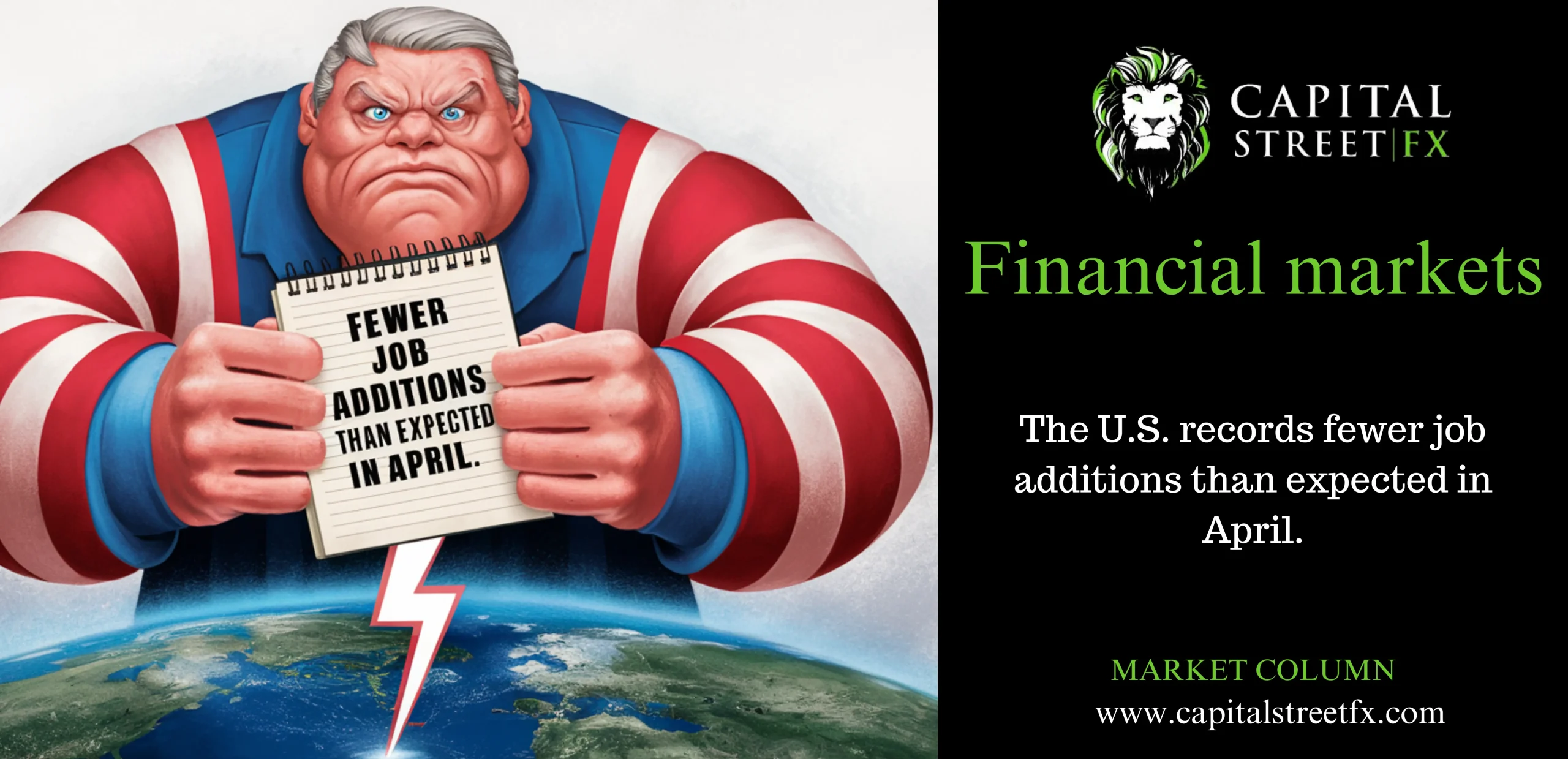The U.S. records fewer job additions than expected in April.
In April, the US economy saw fewer job additions than forecasted, yet overall employment conditions remained relatively constrained. This development may influence market expectations regarding the timing of potential interest rate cuts by the Federal Reserve this year.
According to the Labor Department’s closely tracked labor market report, nonfarm payrolls for last month amounted to 175,000, a decrease from the upwardly revised figure of 315,000 in March. Economists had forecast a reading of 238,000.
Meanwhile, the unemployment rate stood at 3.9%, showing a slight uptick from the previous month’s 3.8%. Projections had anticipated it to remain steady with March’s rate. Nevertheless, this marks the 27th consecutive month that the unemployment rate has remained below 4%.
The growth in average hourly wages saw a month-on-month increase of 0.2%, a deceleration from March’s 0.3%. Expectations had aligned with the previous month’s figure.
Reducing labor demand has been a primary objective of the Federal Reserve’s tightening cycle, with policymakers aiming to alleviate inflationary pressures. Consequently, the recent resilience in the job market has somewhat deterred Fed officials from implementing interest rate cuts that were previously anticipated earlier this year.
During Wednesday’s session, Federal Reserve Chair Jerome Powell remarked that while persistent inflation has diminished the likelihood of an immediate rate cut, it is improbable that the central bank will raise borrowing costs once again.
Following Friday’s data, US stock futures indicated upward movement, whereas US Treasury yields declined. Typically, yields demonstrate an inverse relationship with prices.

